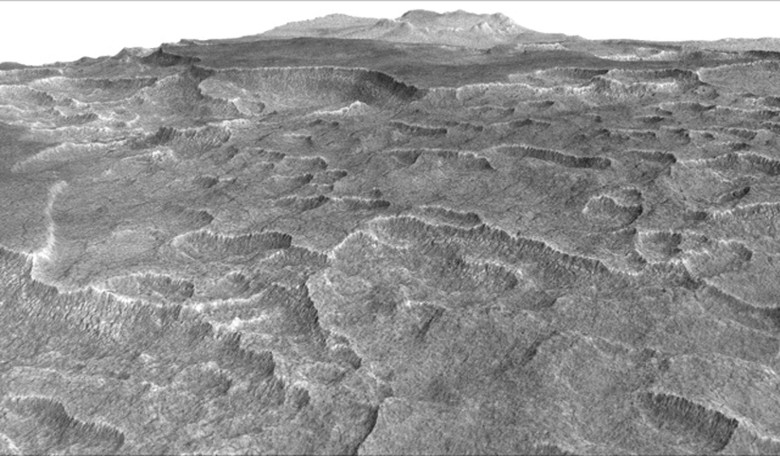Researchers using NASA's Mars Reconnaissance Orbiter have determined that water ice, which makes up half or more of an underground layer in a large region of Mars, holds about as much water as what's in Lake Superior, largest of the Great Lakes in North America.
The scalloped depressions in a region known as Utopia Planitia region, were targeted by scientists when checking for underground ice due to the similarities shared with features of the Canadian Arctic. After examination of the region, which stretches about halfway from the equator to the north pole and is more extensive than the state of New Mexico, scientists identified a massive deposit made up of around 50 to 85 percent water ice, mixed with dust or larger rocky particles.
The Utopia deposit is shielded from the atmosphere by a soil covering estimated to be about 1 to 10 meters (3 to 33 feet) thick and it was identified by data taken from over 600 overhead passes by the orbiter's ground-penetrating Shallow Radar (SHARAD) instrument.
"This deposit probably formed as snowfall accumulating into an ice sheet mixed with dust during a period in Mars history when the planet's axis was more tilted than it is today," said Cassie Stuurman of the Institute for Geophysics at the University of Texas, Austin and lead author of a paper recently submitted to Geophysical Research Letters journal.
Mars currently has an axial tilt of 25 degrees, however, as the planet undergoes a 12,000 year obliquity cycle, the tilt can vary as much as twice as that and any large amount of water that has accumulated at the poles can be warmed up and driven to the middle latitudes.
This newly surveyed ice deposit more than doubles the volume of thick, buried ice sheets known in the northern plains, but still only represents less than one percent of all known water ice on Mars. With a seemingly abundance of water ice buried not far from the surface, it could become a possible resource for future space dwellers looking to colonise the planet.
Although the water deposit is now frozen, if different climate conditions prevailed in the past when the planet's axis was more tilted, it could have led to some (or all) of it melting and this could have implications for the possibility of life on Mars. "Where water ice has been around for a long time, we just don't know whether there could have been enough liquid water at some point for supporting microbial life," said Jack Holt of the University of Texas, a co-author of the Utopia paper who is a SHARAD co-investigator.
"It's important to expand what we know about the distribution and quantity of Martian water," said Mars Reconnaissance Orbiter Deputy Project Scientist Leslie Tamppari, of NASA's Jet Propulsion Laboratory, Pasadena, California. "We know early Mars had enough liquid water on the surface for rivers and lakes. Where did it go? Much of it left the planet from the top of the atmosphere. Other missions have been examining that process. But there's also a large quantity that is now underground ice, and we want to keep learning more about that."











